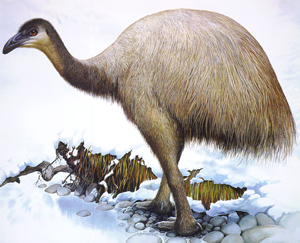The need for increased political will and resources to cause positive change
The UNEP-CBD Global Biodiversity Outlook outlines priority issues for engaging with
the key sectors of food and agriculture, trade, poverty reduction, and development.
The Outlook also notes the importance of integrating biodiversity concerns into the energy
sector, given that climate change is an increasingly significant driver of biodiversity loss,
and that the conservation and sustainable use of biodiversity can contribute to both mitigation
and adaptation measures.
The food and agriculture sector contributes to pressures on biodiversity primarily
through land-use change, which is expected to remain the largest driver of biodiversity
loss beyond 2010 and at least to 2050 - but also through nutrient loading and over
exploitation of wild resources.
These pressures point to a five-fold approach to minimizing biodiversity loss, encompassing
actions to: improve agricultural efficiency; more effectively plan agricultural expansion to
avoid encroaching on habitats of high biodiversity value; moderate demand for food
(particularly for meat among affluent sectors of society); halt over-fishing and destructive
fishing practices; and protect critical ecosystems and habitats.
To implement this approach, a mix of planning, regulations and incentive measures will be
required, building on existing tools developed under the Convention. In addition, creating
markets for ecosystem services, where appropriate, will encourage producers and consumers
to accurately value biodiversity, and plan for its sustainable use.
Since economic development, including food and agricultural production, is strongly
affected by policies on trade, the Global Biodiversity Outlook discusses the need to
integrate biodiversity concerns into trade discussions.
Whereas commitments under the Doha Development Agenda of the World Trade Organization
(such as the removal of subsidies for fisheries and agriculture) have the potential to benefit
biodiversity, trade liberalization is projected to lead, in the short term, to acceleration in
the rate of biodiversity loss in some regions and countries, unless accompanied by proactive
measures to conserve biodiversity.
Economic development is essential to meeting the Millennium Development Goals, yet
long-term sustainability will be undermined if biodiversity issues are not taken into
account. Furthermore, many of the actions that could be taken to eradicate extreme poverty
are likely to accelerate biodiversity loss in the short-run.
The existence of trade-offs but also of potential synergies implies that environmental
considerations, including those related to biodiversity, should be integrated into the
implementation of all of the relevant Millennium Development Goals.
There is substantial scope for better protection of biodiversity through actions
justified on their economic merits. Realizing this potential requires making greater
efforts towards understanding the total value of biodiversity and ecosystem services for
human well-being, and taking into account this value in decision-making processes across
all sectors. |



